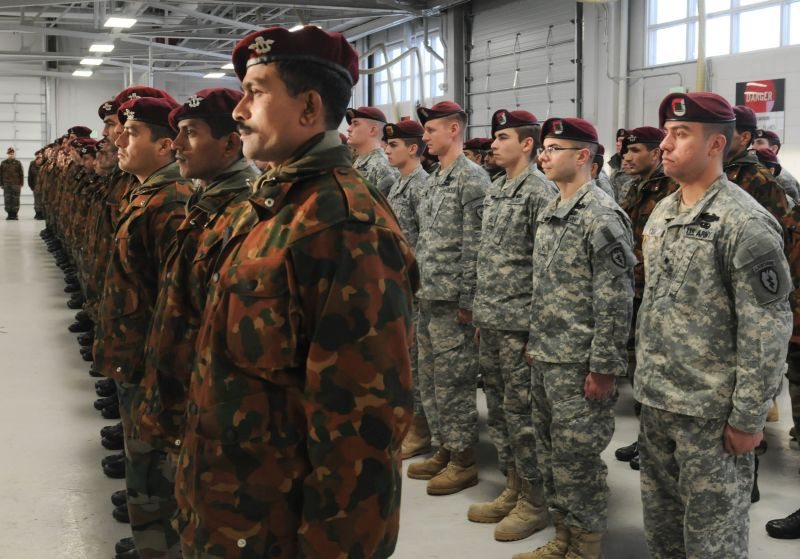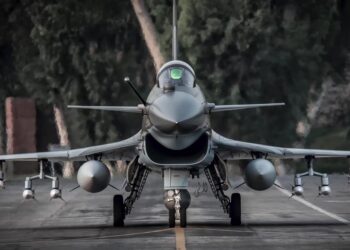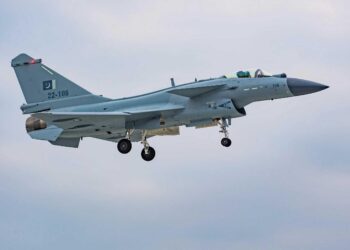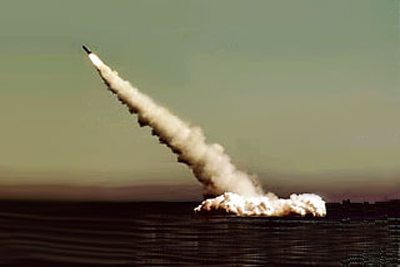The U.S.-India defense relationship is a natural partnership created by shared interests and values and driven by increasingly routine day-to-day interactions, a senior Defense Department official said here today.
Robert Scher, deputy assistant secretary of defense for South and Southeast Asia, spoke to an audience at the New America Foundation.
Day-to-day successes that lay the groundwork for the U.S.-India defense relationship are rarely in the spotlight, Scher said, “but they are an important factor in driving our relationship forward and helping us understand each other.”
The U.S.-India relationship is a priority for the Obama administration and the Defense Department, Scher said, one that President Barack Obama has called a defining partnership of the 21st century. In recent years, he added, high-level visits have cemented the commitment of both nations to the bilateral relationship.
Indian Prime Minister Manmohan Singh visited the United States in 2009, and Obama traveled to India in 2010. Secretary of State Hillary Rodham Clinton’s July attendance at the U.S.-India Strategic Dialogue was her second trip there as secretary of state.
“India is a major regional and global power,” Scher said. “We view our relationship with India as a partnership of equals — two nation states with a commonality of security interests in the Indian Ocean region and beyond.”
Scher said the most important thing the United States is doing in its defense relationship with India is building mutual trust and understanding that will help to ensure that common values and interests can translate into common approaches.
Three key areas in the U.S.-India defense relationship are people-to-people ties, military engagement and defense sales, the deputy assistant secretary of defense said.
Examples of people-to-people ties include attendance by service members from both nations at U.S. and Indian military educational institutions, Scher said.
“In 2010, we had nearly 100 members of the Indian armed services at military schools or courses in the United States,” he said. “These educational interactions are fantastic opportunities to share perspectives, understand cultural mindsets and simply become friends with colleagues.”
All three of the Indian military’s current service chiefs went to school in the United States during their careers, Scher noted.
“Air Marshal [Norman Anil Kumar] Browne graduated from the Air Command and Staff College, he said. “General [Vijay Kumar] Singh is a graduate of both the U.S. Army Ranger School and the U.S. Army War College. And Adm. [Nirmal Kumar] Verma is a graduate of the U.S. Naval War College.”
In the United States, Scher added, retired Navy Adm. Walter L. Doran attended the Indian Defense Service Staff College in Wellington, Tamil Nadu, India, in 1979. There, he formed a close relationship with Indian colleagues who included former Indian Chief of Naval Staff Adm. Arun Prakash and Adm. Sureesh Mehta.
“This has real-world implications,” Scher said. “During his 10 years as admiral of the Pacific Fleet, Admiral Doran’s personal relationship with Admiral Prakash proved instrumental in initiating coordination between the U.S. and Indian response efforts to the 2004 Indian Ocean tsunami.”
The U.S. Naval Postgraduate School recently formalized a memorandum of understanding with India’s Defense Institute of Advanced Technology, he added.
“This September,” Scher told the group, “they will jointly conduct a defeating-terrorism workshop that will bring together senior leaders from both sides, including the director general of India’s Defense Research Development Organization and the [U.S.] chief of naval research to discuss ways to leverage research capabilities to contribute to the defeat of terrorism.”
A similar workshop on cybersecurity is planned for the near future, he said.
In January, the executive director of the Air Force Research Laboratory visited India with a team of Air Force scientists, Scher said. They returned to the United States with proposals for further discussions in 18 new technological areas, including nanomaterials, roadside-bomb detection and high-temperature super alloys.
“Several of these will likely lead to agreements for the exchange of technical information or collaborative research projects that will add to the dozen or so such agreements established between the two countries since 2005,” he said.
Military-to-military engagements are another element of the U.S.-India defense partnership, Scher said.
“We partner with the Indians on a number of educational, doctrinal, institutional, training and other subject matter exchanges,” he added. “These engagements and exercises provide opportunities for our militaries to work together and learn from each other, … and most importantly, they improve our ability to address real-life challenges.”
India routinely has more exercises with the United States than with any other country, Scher noted. “Over the last six years, we’ve done nearly 50 major exercises with India, … and our exercises are evolving in complexity,” he said.
Over a decade, Malabar, a regularly scheduled bilateral naval field training exercise with India, has advanced from little more than a passing exercise to a full engagement that exercises all functional warfare areas, Scher said.
“Malabar allows our navies to work cooperatively in integrated air and missile defense, antisubmarine and naval special warfare scenarios, for example,” he said.
In September, Scher said, in one of the first major interactions with the Indian coast guard, “we’re going to send a training team of subject matter experts to India to work with the Indian coast guard on counterterrorism and antipiracy-related boarding measures.”
The major U.S. exercise with the Indian army, Yudh Abyhas, started in 2004 as the first conventional army-to-army training with India since 1962, Scher said.
“The exercise, in addition to sharing training and capabilities, promotes cooperation between our armies on partner readiness,” he said. “The first deployment of Stryker vehicles outside the United States other than to a war zone was to India [to support their participation] in Yudh Abyhas.”
The practical effect of such interaction is to allow the two nations to make progress on issues of shared interest, such as maritime security, Scher said.
“The United States and India share a clear desire for freedom of navigation and unimpeded sea lines of communication, particularly in the Indian Ocean,” he said. “And through our military engagements this year, we will seek to deepen cooperation on key issues such as maritime domain awareness, countering piracy and humanitarian assistance and disaster relief.”
Together, the United States and India have an important role in fostering multilateral cooperation in Asia and supporting the emerging regional security architectures, Scher said.
“Overall,” he added, “we will increasingly look to India’s leadership and partnership in promoting and maintaining security in the region and the world.”
Defense sales to India increased from virtually no defense trade relationship in the 1990s to nearly $6 billion today in foreign military sales alone, Scher said.
“It is clear that the Indian military in the future will routinely use U.S. equipment and all services across a full range of mission areas,” he added.
The United States and India, Scher said, “are destined to be closer because of our shared interests and values, democracy, human rights and our desire for a stable, secure and inclusive world economy.”
All of this, he added, “makes us natural partners.”











